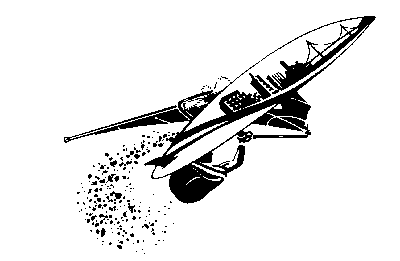
|
SAN FRANCISCO BOARDSAILING ASSOCIATION1592 UNION STREET, BOX 301 SAN FRANCISCO, CALIFORNIA 94123December 26, 2001 Honorable Alan Maris, Mayor
Dear Neighbors: Thank you for allowing the San Francisco Boardsailing Association (SFBA) to present the needs of the windsurfing community to the Waterfront Commission. We appreciate your suggestions, questions and interest in our sport. As we pointed out, windsurfing is a resource-dependent recreational activity that depends on the wind and waters of the Bay as resources. We believe that it is in the very nature of resource planning to have the designated uses reflect the unique assets of the site. In this case, the south shoreline of the Albany Bulb is one of the best windsurfing locations, if not the very best windsurfing location, in the East Bay. This is where the wind is steady and strong. As such, the Albany Bulb presents an absolutely unique recreational resource. Unless you windsurf, it is hard to appreciate how localized and capricious the wind on our bay can be. From about April through September, the prevailing wind comes directly across the bay from the Golden Gate and hits the south and west sides of the Bulb. Surprisingly, there are many days that this channel of strong wind never reaches the shore at Golden Gate Fields or Point Isabel, let alone Berkeley, Point Emery, or Marina Bay in Richmond. This means that Albany could offer windsurfing access when other launch sites in the East Bay are too calm for windsurfing and too calm for someone to sail out to the wind. Our sport is consistent with all other uses of the park because it is quiet and non- polluting. We would not interfere with birds, and frequently we would use the park when others find it too windy to enjoy. We feel that windsurfing is compatible with the Albany Waterfront Plan. On page 15, the Plan states that windsurfing access from the Albany Bulb should be allowed. Since our sport is equipment-intensive, windsurfing access necessitates vehicular access and parking. We use lots of equipment and we change boards, sails and fins depending on how the wind changes. We need easy access to the vehicles that carry our equipment. The Albany Bulb is a man-made landfill that encompasses more than 40 acres. We presented several different concepts for parking that could accommodate about 20 to 50 cars on less than one acre. Access to those areas would use one of two existing roads. We cannot see irresolvable problems created by using a small area of the bulb and existing roads for access to the water. As you know, access to the shoreline and to the waters of the Bay is a cornerstone of the Bay Conservation and Development Commission's authorizing legislation, and fundamental to the legislative authorization of Eastshore State Park. Windsurfing is a use that is not only highly appropriate for the Park, it is also a use that cannot be supported by shifting it upland or to another area. A windsurfing launch area must have open water, reliable wind, and reasonable vehicular access. In recent years, there has been a net loss of windsurfing access in the Bay Area as vehicular access or parking has been restricted near existing launches. As new opportunities for windsurfing access have arisen over the last few years, the tendency has been for the agencies or municipalities involved to be sympathetic but insistent that windsurfing access should be accommodated elsewhere. The result is that our access to the waters of the Bay has been degraded even as the population grows and the amount of shoreline open to the public increases. One option we explored briefly at the meeting was to have gate-controlled vehicular access on the south side of the Neck and Bulb. This portion of the Bulb is farthest from the wetland area frequented by birds and, given the configuration of the landfill and the foliage, vehicles would be invisible from most of the park. There could be a gate and pass system that would allow for 20 to 50 vehicles maximum at one time. With limited vehicular access along the south edge only, the vast expanse of the Bulb would continue to be an urban wilderness. Either of the roads that now exist, plus parking near the southeast corner of the Bulb would be sufficient for windsurfing access to an existing small gravel beach. All we need is permission to open the gate. Our suggestion to the Waterfront Commission was that they recommend to the Albany City Council that vehicular access for windsurfing be allowed on the Neck and the Bulb of the Albany Landfill in Eastshore State Park. Once again, we would like to emphasize the value of cooperation among stakeholders, and cultivate the value of stewardship as a basis for planning the shoreline. We certainly appreciate the existing and future value of the Albany Bulb for restoring wildlife. Windsurfers as a group, like backpackers and kayakers, appreciate natural resources, wildlife and habitat preservation. We also are concerned about water quality in the Bay, which affects the health of waterfowl and windsurfers. Furthermore, we think that recreational users like windsurfers, committed to stewardship of the resources, are essential to securing funding for restoration of the area, and to educating the users about the value of the land and the importance of proper use. We are committed to protecting existing habitat. We encourage the development of new habitat, but believe that recreational values and access to the waters of the Bay must be given the equal consideration. We are fortunate that our best access point is located on the Albany Landfill, an artificial landform made out of concrete and rebar, placing us well clear of the natural preserved habitats in the area that include the Albany Mudflats, Brooks Island, and the marsh and tidal land that runs from along the Richmond waterfront from Pt. Isabel to Marina Bay. Sincerely, |

|
|
Sue A. Beyer, Site Representative, SFBA
Peter Thorner, President, SFBA
Cc:
|